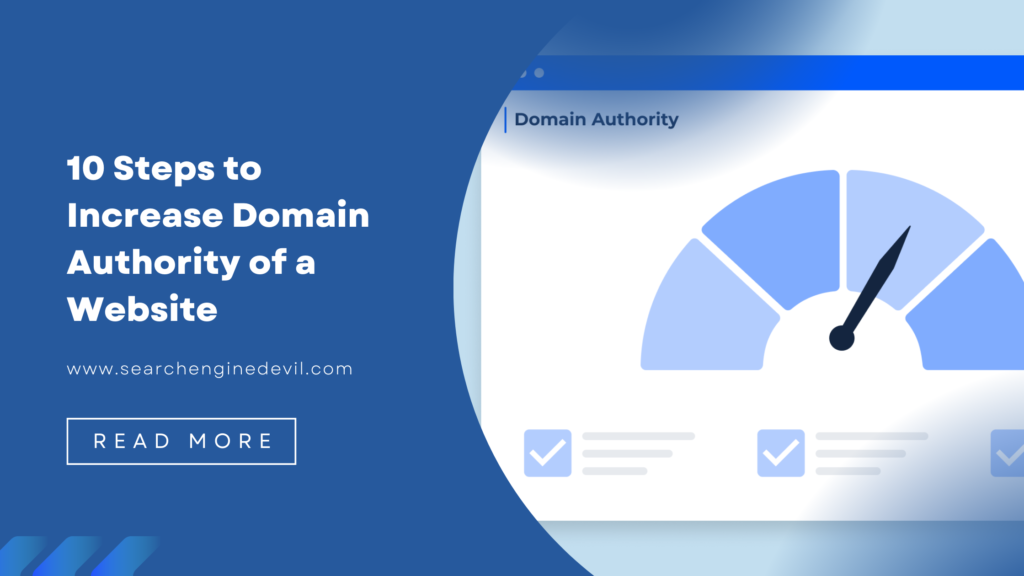In today’s competitive online landscape, a strong domain authority (DA) is crucial for website success. DA acts as a search engine’s report card on your website’s trustworthiness and credibility. The higher your DA, the better your chances of ranking on search engine results pages (SERPs) and attracting organic traffic.
Here are 10 effective steps you can take to supercharge your website’s domain authority:
1. Content is King (and Queen): Create Link-Worthy Gems
At the heart of a high DA lies exceptional content. Craft informative, engaging, and valuable content that establishes you as an authority in your niche. Conduct thorough keyword research to target relevant search terms and optimize your content for those keywords naturally.
2. Become a Backlink Magnet:
Backlinks are essentially votes of confidence from other websites. The more high-quality backlinks you acquire, the stronger your DA becomes. Here are some ways to attract backlinks:
- Guest blogging: Contribute high-value guest posts to reputable websites in your industry.
- Broken link building: Identify broken links on relevant websites and offer your content as a replacement.
- Create infographics and shareable content: High-quality visuals are more likely to be shared and linked back to.
3. Internal Linking: Don’t Let Your Pages Feel Like Islands
Strategic internal linking strengthens your website’s architecture and helps search engines understand the hierarchy of your content. Link relevant pages to each other to improve user navigation and distribute link juice throughout your website.
4. Technical SEO: The Foundation of a Strong Website
A website riddled with technical SEO issues like slow loading times, mobile-unfriendliness, or broken code will struggle to achieve a high DA. Ensure your website is technically sound by performing regular audits and addressing any problems that arise.
5. Mobile Friendliness is Non-Negotiable
With the ever-increasing use of mobile devices for browsing, a website that isn’t mobile-friendly is simply invisible to a vast portion of potential users. Google prioritizes mobile-friendly websites in search results, so make sure your website looks and functions flawlessly on all devices.
6. Optimize Your On-Page SEO:
On-page SEO involves optimizing individual web pages to rank higher for relevant keywords. This includes optimizing page titles, meta descriptions, header tags (H1, H2, etc.), and image alt text.
7. Build Brand Mentions (Even Indirect Ones)
Building brand awareness online goes beyond just backlinks. Encourage mentions of your brand name, even if they aren’t directly linked. This can be achieved through social media engagement, online communities, or industry forums.
8. Leverage Social Media to Amplify Your Reach
Social media platforms offer a powerful way to promote your content and build relationships with your audience. Share your content on social media platforms and engage with your followers to increase brand awareness and drive traffic back to your website.
9. Patience is a Virtue: Building DA Takes Time
Building a strong DA is a marathon, not a sprint. Consistent effort and high-quality content creation are key. Regularly monitor your website’s DA using tools like Moz or Ahrefs to track your progress and identify areas for improvement.
10. Stay Updated on SEO Trends: The Algorithm Evolves
Search engine algorithms are constantly evolving. Stay updated on the latest SEO trends and best practices to ensure your website remains optimized for success.
By implementing these 10 steps, you can embark on a journey towards a significantly stronger domain authority for your website. Remember, high-quality content, strategic backlink acquisition, and a user-centric approach are the cornerstones of a successful SEO strategy. So, put these steps into action, and watch your website climb the SERP ladder!



